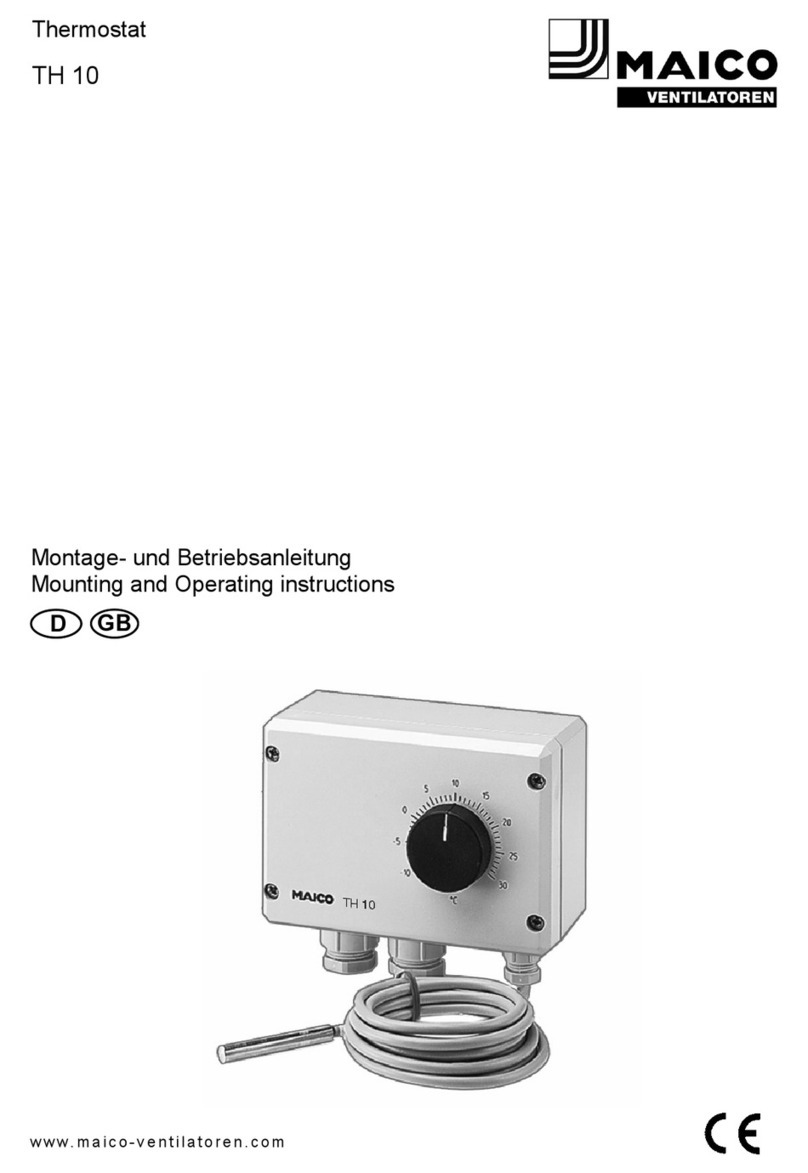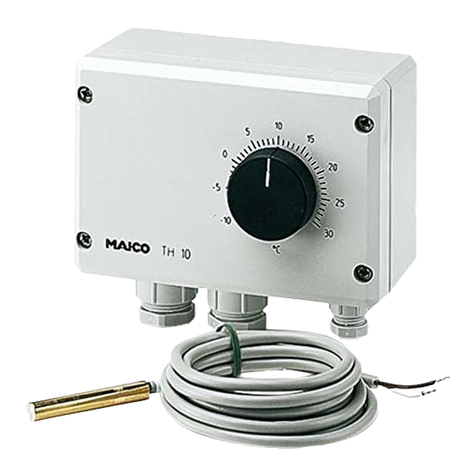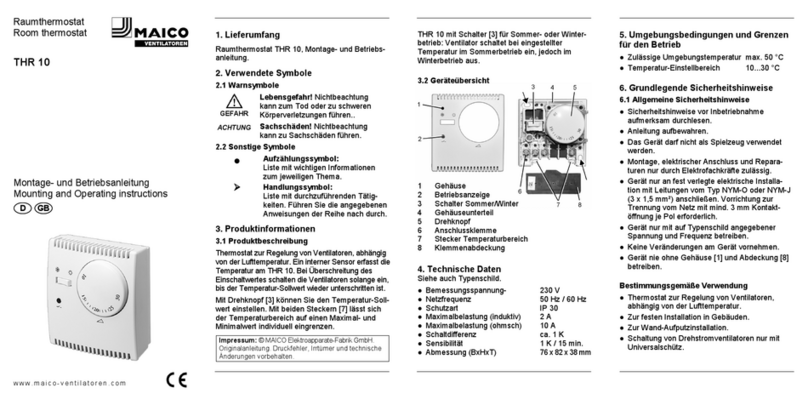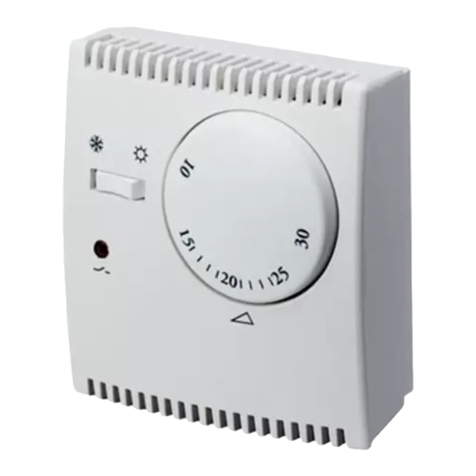
DE │11. Montage
11. Montage
11.1 Montagehinweise
Fehlerhafte Messwerte bei ungeeigne-
tem Montageort. Temperaturfühler [7]
richtig platzieren:
Störeinflüsse vermeiden.
Direkte Sonneneinstrahlung vermeiden.
Nicht im Bereich von Zugluft, heißer
oder kalter Luft (Herd, Heizkörper,
Kühlschrank, Fenster, Lufteinlass
Tellerventil/Innengitter etc.).
Nicht in Baueinheit mit anderen wärme-
erzeugenden Geräten verwenden
●Gerät nur auf trockenem, ebenen Unter-
grund montieren. Einbaulage beliebig.
●Gerät nur komplett montiert an einer fest
verlegten elektrischen Installation
betreiben.
●Gerät nur mit auf dem Typenschild
angegebener Spannung und Frequenz
betreiben.
●Bei der Elektroinstallation die geltenden
Vorschriften beachten, in Deutschland
insbesondere VDE 0100 mit den
entsprechenden Teilen.
●Klemmbereich der PG-Verschraubungen
[3] geeignet für Anschlussleitungen mit
Außendurchmesser 6 bis 12 mm.
●Anschlussklemmen für max. Leitungs-
querschnitt 2,5 mm².
●Eine Vorrichtung zur Trennung vom Netz
mit mindestens 3 mm Kontaktöffnung je
Pol ist vorgeschrieben.
●Schutzart nur gewährleistet bei
bestimmungsgemäßem Einbau und
bei ordnungsgemäßer Einführung der
Leitungen in das Gehäuse.
11.2 Gerätemontage
1. Versorgungsstromkreise abschalten,
Warnschild gegen Wiedereinschalten
sichtbar anbringen.
2. Drehknopf [2] abziehen.
3. Abdeckung [1] entfernen (4 Schrauben).
4. Gehäuse [6] mit 4 Schrauben an der Wand
befestigen. Geeignetes Befestigungs-
material ist bauseitig bereitzustellen.
Kurzschluss durch Nässe bei nicht
ordnungsgemäßer Einführung der
Anschlussleitungen in das Gehäuse.
Darauf achten, dass die Gummidich-
tungen der PG-Verschraubung die
Anschlussleitungen dicht umschließen.
5. Anschlussleitungen durch die PG-Ver-
schraubung in das Gehäuse führen.
Die Anschlussleitungen mit der
PG-Verschraubung sichern.
6. Anschlussleitungen gemäß Schaltbild
(Kapitel 16, Seite 12) verdrahten.
Verdrahtung prüfen, Schrauben der
Anschlussklemmen ggf. nachziehen.
7. Abdeckung [1] anbringen (4 Schrauben)
und Drehknopf [2] aufstecken. Darauf
achten, dass Drehknopfwelle [5] nicht
beschädigt wird und die Gummidichtung
um Welle und Gehäuserand dicht sitzt.
8. Ventilator(en) gemäß Betriebsanleitung
installieren. Netzsicherung einschalten.
12. Inbetriebnahme
1. Übereinstimmung mit den technischen
Daten kontrollieren Typenschild.
2. Solltemperatur mit Drehknopf [2]
einstellen.
3. Funktionstest durchführen.
13. Reinigung
1. Gehäuse und Temperaturfühler regelmäßig
mit einem trockenen Tuch reinigen.
































